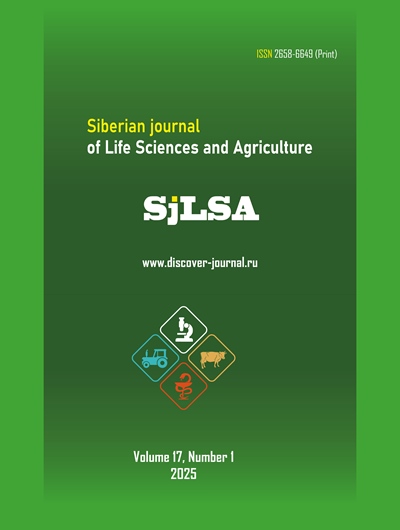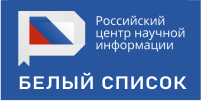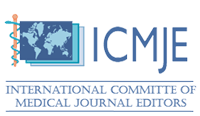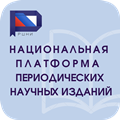Исследование возможности применения гиперспектральной съемки для оценки свежести плодов земляники
Аннотация
Обоснование. Плоды земляники являются ценным и востребованным, но скоропортящимся, продуктом питания. Свежесть плодов зависит от времени, прошедшего от момента их сбора, и определяет срок сохранения ими питательной ценности, внешней привлекательности и безопасности для потребителя. Традиционные подходы к оценке состояния плодов отличаются субъективностью, трудоемкостью и низкой производительностью. Настоящая работа посвящена анализу возможности бесконтактной оценки свежести плодов земляники на основе её гиперспектрального анализа.
Материалы и методы. В ходе исследования оценивались спектральные свойства внешней поверхности и внутренней структуры плодов земляники сорта Ремонтантная Елизавета II в течение 26 дней после сбора плодов. Средством измерения служил акустооптический видеоспектрометр видимого и ближнего инфракрасного диапазона. Цифровая обработка данных включала предварительное улучшение спектральных изображений, морфологическую обработку и определение количественной метрики отражательной способности в наиболее информативном спектральном диапазоне длин волн. Статистический анализ основывался на построении регрессионных моделей определения срока после сбора плодов. Модели оценивались по коэффициенту детерминации (), относительной ошибке () и среднеквадратическому отношению ().
Результаты. Предложен подход к бесконтактной оценке свежести плодов земляники на основе их оптического анализа. Получены математические модели определения срока после сбора плодов земляники Ремонтантная Елизавета II по гиперспектральным изображениям поверхности и внутренней структуры образцов. Показано, что анализ спектральных свойств внешней поверхности плодов обеспечивает более высокую точность определения срока после сбора плодов и позволяет достичь , и . Проведена оценка точности регрессионных моделей с полиномами разных порядков, показавшая наибольшую эффективность кубического полинома. Определен набор наиболее информативных для решаемой задачи спектральных интервалов, на основе которого проведен множественный регрессионный анализ, показавший наиболее высокую точность.
Заключение. Предложенный подход к бесконтактному количественному анализу свежести плодов земляники отличается объективностью, производительностью и автоматизированностью. Проведенная оценка отдельных этапов пробоподготовки, съемки, цифровой обработки данных и статистического анализа будет полезна при разработке методов диагностики продуктов питания. Предложенный подход может стать дополнением традиционных методов контроля качества пищевой продукции и использоваться при формировании оптимальных стратегий транспортировки, обработки, хранения и реализации партий земляники.
Информация о спонсорстве. Работа проводилась в рамках выполнения государственного задания НТЦ УП РАН (проект FFNS-2022-0010).
EDN: EMYEPG
Скачивания
Литература
Список литературы
Леонтьева, Л. Н. (2012). Последовательный выбор признаков при восстановлении регрессии. Машинное обучение и анализ данных, 1(3), 335–346.
Pozhar, V. E., et al. (2019). Hyperspectrometer based on an acousto-optic tunable filter for unmanned aerial vehicles. Light & Engineering, 27(3), 99–104. https://doi.org/10.33383/2018-029
Azzini, E., et al. (2010). Bioavailability of strawberry antioxidants in human subjects. British Journal of Nutrition, 104(8), 1165–1173. https://doi.org/10.1017/S000711451000187X
Bae, H., et al. (2014). Assessment of organic acids and sugars in apricots, plums, plumcots, and peaches during fruit maturation. Journal of Applied Botany and Food Quality, 87, 24–29. https://doi.org/10.5073/JABFQ.2014.087.004
Bevacqua, D., Quilot-Turion, B., & Bolzoni, L. (2018). A model for temporal dynamics of brown rot propagation in fruit orchards. Phytopathology, 108(5), 595–601. https://doi.org/10.1094/PHYTO-07-17-0250-R
Choi, J. Y., et al. (2021). Application of convolutional neural networks to assess the external quality of strawberries. Journal of Food Composition and Analysis, 102, 86–94. https://doi.org/10.1016/j.jfca.2021.104071
Devassy, B. M., & George, S. (2021). Comparison of Regression Models for Estimating Strawberry Firmness Using Hyperspectral Imaging: Spectral Preprocessing to Compensate for Packaging Film. Journal of Spectral Imaging, 10, 55–69. https://doi.org/10.1255/jsi.2021.a3
ElMasry, G., et al. (2007). Hyperspectral imaging for nondestructive determination of some quality attributes for strawberries. Journal of Food Engineering, 81(1), 98–107. https://doi.org/10.1016/j.jfoodeng.2006.10.016
Gao, Z., et al. (2020). Real-time hyperspectral imaging for estimating strawberry ripeness in the field using deep learning. Artificial Intelligence in Agriculture, 4, 31–38. https://doi.org/10.1016/j.aiia.2020.04.003
Giampieri, F., et al. (2012). The strawberry: composition, nutritional quality, and impact on human health. Nutrition, 28(1), 9–19. https://doi.org/10.1016/j.nut.2011.08.009
Hu, X. F., et al. (2016). Nondestructive hardness assessment of kiwifruit using near-infrared spectroscopy. Proceedings - 2016 6th International Conference on Instrumentation and Measurement, Computer, Communication and Control, IMCCC 2016, pp. 69–72. https://doi.org/10.1109/IMCCC.2016.109
Jha, S. K., et al. (2010). Firmness characteristics of mango hybrids under ambient storage. Journal of Food Engineering, 97(2), 208–212. https://doi.org/10.1016/j.jfoodeng.2009.10.011
Katrašnik, J., Pernuš, F., & Likar, B. (2013). Radiometric calibration and noise estimation of acousto-optic tunable filter hyperspectral imaging systems. Applied Optics, 52(15), 3526–3537. https://doi.org/10.1364/AO.52.003526
Ktenioudaki, A., et al. (2022). Decision support tool for determining shelf-life of strawberries using hyperspectral imaging technology. Biosystems Engineering, 221, 105–117. https://doi.org/10.1016/j.biosystemseng.2022.06.013
Lu, R., & Peng, Y. (2006). Hyperspectral scattering for assessing peach fruit firmness. Biosystems Engineering, 93(2), 161–171. https://doi.org/10.1016/j.biosystemseng.2005.11.004
Mendoza, F., et al. (2011). Integrated spectral and image analysis of hyperspectral scattering data for prediction of apple fruit firmness and soluble solids content. Postharvest Biology and Technology, 62(2), 149–160. https://doi.org/10.1016/j.postharvbio.2011.05.009
Nunes, C. N., & Emond, J.-P. (2007). Relationship between weight loss and visual quality of fruits and vegetables. Proceedings of Florida State Horticultural Society, 120, 235–245.
Omar, A. F. (2013). Spectroscopic profiling of soluble solids content and acidity of intact grapes, limes, and starfruit. Sensor Review, 33(3), 238–245. https://doi.org/10.1108/02602281311324690
Sánchez, M. T., et al. (2012). Non-destructive characterization and quality control of intact strawberries based on NIR spectral data. Journal of Food Engineering, 110(1), 102–108. https://doi.org/10.1016/j.jfoodeng.2011.12.003
Seki, H., et al. (2023). Visualization of sugar content distribution in white strawberries using near-infrared hyperspectral imaging. Foods, 12(5), 122–136. https://doi.org/10.3390/foods12050931
Shao, Y., & He, Y. (2008). Nondestructive measurement of acidity of strawberries using visible and near infrared spectroscopy. International Journal of Food Properties, 11(1), 102–111. https://doi.org/10.1080/10942910701257057
Wang, H., et al. (2015). Fruit quality evaluation using spectroscopy technology: A review. Sensors (Switzerland), 15(5), 11889–11927. https://doi.org/10.3390/s150511889
Zhang, C., et al. (2016). Hyperspectral imaging analysis for ripeness evaluation of strawberries using support vector machine. Journal of Food Engineering, 179, 11–18. https://doi.org/10.1016/j.jfoodeng.2016.01.002
Zhang, D., et al. (2018). Rapid prediction of sugar content in Dangshan pear (Pyrus spp.) using hyperspectral imagery data. Food Analytical Methods, 11(8), 2336–2345. https://doi.org/10.1007/s12161-018-1212-3
Zhang, Y., et al. (2015). Predicting apple sugar content based on spectral characteristics of apple tree leaves in different phenological stages. Computers and Electronics in Agriculture, 112, 20–27. https://doi.org/10.1016/j.compag.2015.01.006
References
Leonteva, L. N. (2012). Sequential feature selection in regression recovery. Journal of Machine Learning and Data Analysis, 1(3), 335–346.
Pozhar, V. E., et al. (2019). Hyperspectrometer based on an acousto-optic tunable filter for unmanned aerial vehicles. Light & Engineering, 27(3), 99–104. https://doi.org/10.33383/2018-029
Azzini, E., et al. (2010). Bioavailability of strawberry antioxidants in human subjects. British Journal of Nutrition, 104(8), 1165–1173. https://doi.org/10.1017/S000711451000187X
Bae, H., et al. (2014). Assessment of organic acids and sugars in apricots, plums, plumcots, and peaches during fruit maturation. Journal of Applied Botany and Food Quality, 87, 24–29. https://doi.org/10.5073/JABFQ.2014.087.004
Bevacqua, D., Quilot-Turion, B., & Bolzoni, L. (2018). A model for temporal dynamics of brown rot propagation in fruit orchards. Phytopathology, 108(5), 595–601. https://doi.org/10.1094/PHYTO-07-17-0250-R
Choi, J. Y., et al. (2021). Application of convolutional neural networks to assess the external quality of strawberries. Journal of Food Composition and Analysis, 102, 86–94. https://doi.org/10.1016/j.jfca.2021.104071
Devassy, B. M., & George, S. (2021). Comparison of Regression Models for Estimating Strawberry Firmness Using Hyperspectral Imaging: Spectral Preprocessing to Compensate for Packaging Film. Journal of Spectral Imaging, 10, 55–69. https://doi.org/10.1255/jsi.2021.a3
ElMasry, G., et al. (2007). Hyperspectral imaging for nondestructive determination of some quality attributes for strawberries. Journal of Food Engineering, 81(1), 98–107. https://doi.org/10.1016/j.jfoodeng.2006.10.016
Gao, Z., et al. (2020). Real-time hyperspectral imaging for estimating strawberry ripeness in the field using deep learning. Artificial Intelligence in Agriculture, 4, 31–38. https://doi.org/10.1016/j.aiia.2020.04.003
Giampieri, F., et al. (2012). The strawberry: composition, nutritional quality, and impact on human health. Nutrition, 28(1), 9–19. https://doi.org/10.1016/j.nut.2011.08.009
Hu, X. F., et al. (2016). Nondestructive hardness assessment of kiwifruit using near-infrared spectroscopy. Proceedings - 2016 6th International Conference on Instrumentation and Measurement, Computer, Communication and Control, IMCCC 2016, pp. 69–72. https://doi.org/10.1109/IMCCC.2016.109
Jha, S. K., et al. (2010). Firmness characteristics of mango hybrids under ambient storage. Journal of Food Engineering, 97(2), 208–212. https://doi.org/10.1016/j.jfoodeng.2009.10.011
Katrašnik, J., Pernuš, F., & Likar, B. (2013). Radiometric calibration and noise estimation of acousto-optic tunable filter hyperspectral imaging systems. Applied Optics, 52(15), 3526–3537. https://doi.org/10.1364/AO.52.003526
Ktenioudaki, A., et al. (2022). Decision support tool for determining shelf-life of strawberries using hyperspectral imaging technology. Biosystems Engineering, 221, 105–117. https://doi.org/10.1016/j.biosystemseng.2022.06.013
Lu, R., & Peng, Y. (2006). Hyperspectral scattering for assessing peach fruit firmness. Biosystems Engineering, 93(2), 161–171. https://doi.org/10.1016/j.biosystemseng.2005.11.004
Mendoza, F., et al. (2011). Integrated spectral and image analysis of hyperspectral scattering data for prediction of apple fruit firmness and soluble solids content. Postharvest Biology and Technology, 62(2), 149–160. https://doi.org/10.1016/j.postharvbio.2011.05.009
Nunes, C. N., & Emond, J.-P. (2007). Relationship between weight loss and visual quality of fruits and vegetables. Proceedings of Florida State Horticultural Society, 120, 235–245.
Omar, A. F. (2013). Spectroscopic profiling of soluble solids content and acidity of intact grapes, limes, and starfruit. Sensor Review, 33(3), 238–245. https://doi.org/10.1108/02602281311324690
Sánchez, M. T., et al. (2012). Non-destructive characterization and quality control of intact strawberries based on NIR spectral data. Journal of Food Engineering, 110(1), 102–108. https://doi.org/10.1016/j.jfoodeng.2011.12.003
Seki, H., et al. (2023). Visualization of sugar content distribution in white strawberries using near-infrared hyperspectral imaging. Foods, 12(5), 122–136. https://doi.org/10.3390/foods12050931
Shao, Y., & He, Y. (2008). Nondestructive measurement of acidity of strawberries using visible and near infrared spectroscopy. International Journal of Food Properties, 11(1), 102–111. https://doi.org/10.1080/10942910701257057
Wang, H., et al. (2015). Fruit quality evaluation using spectroscopy technology: A review. Sensors (Switzerland), 15(5), 11889–11927. https://doi.org/10.3390/s150511889
Zhang, C., et al. (2016). Hyperspectral imaging analysis for ripeness evaluation of strawberries using support vector machine. Journal of Food Engineering, 179, 11–18. https://doi.org/10.1016/j.jfoodeng.2016.01.002
Zhang, D., et al. (2018). Rapid prediction of sugar content in Dangshan pear (Pyrus spp.) using hyperspectral imagery data. Food Analytical Methods, 11(8), 2336–2345. https://doi.org/10.1007/s12161-018-1212-3
Zhang, Y., et al. (2015). Predicting apple sugar content based on spectral characteristics of apple tree leaves in different phenological stages. Computers and Electronics in Agriculture, 112, 20–27. https://doi.org/10.1016/j.compag.2015.01.006
Просмотров аннотации: 181 Загрузок PDF: 6
Copyright (c) 2025 Georgiy V. Nesterov, Anastasia V. Guryleva, Milana O. Sharikova, Svetlana A. Sukhanova, Alexander S. Machikhin

Это произведение доступно по лицензии Creative Commons «Attribution-NonCommercial-NoDerivatives» («Атрибуция — Некоммерческое использование — Без производных произведений») 4.0 Всемирная.






















































